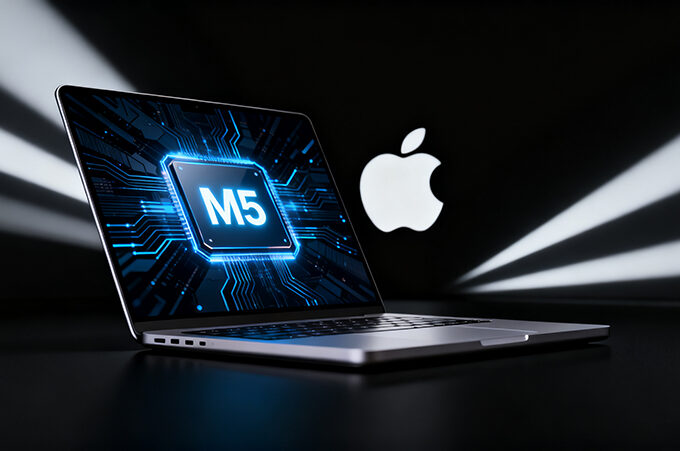An MCU is a small computer that uses a single integrated circuit containing one or more CPUs (processing cores), memory, and programmable input/output peripherals. These microchips are an affordable and popular product responsible for data acquisition, sensing, and control in the physical world.
MCUs can be used in a variety of systems, from automotive engine controls and implantable medical devices to remote controls, office machines, appliances, power tools, toys, and other embedded systems. They act as a bridge between reality and the physical world, enabling communication protocols and hardware abstraction layers to interact and run the systems necessary for device operation. You’ll learn more through the Latest.com coverage.
Common Features of Microcontrollers
Microcontrollers provide powerful functionality in a tiny package and are the brains of choice for embedded devices. Regardless of architecture, all MCUs have a few things in common.
Bit-based MCU core architecture: the number of bits (8, 16, 32) used by the MCU (sometimes referred to as the bit depth or data width), and the number of bits in the CPU is the number of bits that the CPU can simultaneously register and process binary digits at one time, which corresponds to the number of bits in the registers in the CPU. Simply understand that the registers of 8-bit MCU are 8-bit, but the width of the address bus can be different from the CPU word length, for example, the 8086 of the first generation of PCs is a 16-bit CPU, but the address bus is 20-bit, and it can support a maximum of 1MB (2²⁰ Byte) of memory.
Memory: MCUs have two types of memory. Program memory (Flash) stores the code that runs on the MCU, while data memory (RAM) stores the data used by the code.
Peripherals and communication interfaces: These built-in interfaces allow the microcontroller to interact with the outside world, such as sensing temperature or controlling motors.
Security: MCU security is critical to protect firmware intellectual property, protect private data within the device, and guarantee service execution.

What is An 8-bit MCU?
8-bit MCUs have been at the heart of embedded development since the 1980s, and continue to play an important role in IoT development even as 32-bit architectures become more common. The simplicity and cost-effectiveness of modern 8-bit MCUs ensure that they will remain one of the key devices for engineers for many years to come.
Here are some examples of popular 8-bit MCU architectures.
PIC: Developed by General Instruments in 1975 and now owned by Microchip, the PIC chip powers countless toys, remote controls, and affordable gadgets.
AVR: Developed by Atmel and now also owned by Microchip, AVR chips are loved by hobbyists and professionals alike and are at the heart of the Arduino boards that make electronics accessible to everyone. They are a catalyst for innovation and are widely used in embedded systems.
8051: Developed by Intel in 1980 and a true veteran, the 8051 thrives in industrial applications and medical devices, highlighting the enduring appeal of simplicity and reliability.
Advantages of 8-bit MCUs
8-bit microcontrollers have several significant advantages over 32-bit microcontrollers.
Cost: 8-bit MCUs are affordable, making them ideal for budget-conscious projects and hobbyist experimentation.
Power consumption: 8-bit MCUs are much simpler than 32-bit MCUs, making them ideal for simple applications where power consumption is critical.
Code Size: 8-bit MCUs have a smaller code footprint, making them suitable for applications with a small memory footprint.
Ease of Use: 8-bit MCUs are easy to learn and use. With off-the-shelf development tools and an online community, users can start coding immediately.
Availability: 8-bit MCUs are ready to go, with plenty of options to choose from. Whether you’re building a simple robot or a smart home sensor, 8-bit MCUs can turn ideas into reality.
The Downside of 8-bit MCUs
While 8-bit microcontrollers are popular because of their affordability and compact size, they do have some limitations compared to higher-bit microcontrollers.
Limited storage space: One of the major drawbacks of 8-bit microcontrollers is the limited storage space, which can make it challenging to perform complex tasks or handle large amounts of data.
Processing speed: Due to its limited instruction set, 8-bit MCUs may be limited in their ability to perform complex tasks or process large amounts of data. This can be a significant disadvantage for applications that require real-time processing or high-speed data transfer.

How About 32-bit MCUs?
32-bit MCUs excel at complex tasks, handle large amounts of data, and support advanced algebraic and floating-point calculations. Here are some examples of popular 32-bit MCU architectures:
ARM Cortex-M: The ARM Cortex-M family is a family of 32-bit microcontrollers designed for embedded systems. It is the powerhouse behind smartphones, drones, and wearables.
PIC32: The PIC32 microcontrollers are a family of 32-bit microcontrollers developed by Microchip. From industrial automation to robotics, the PIC32 can efficiently handle tough tasks.
AVR32: AVR32 is a 32-bit microcontroller architecture developed by Atmel that brings the user-friendly world of AVR into the 32-bit realm, making it perfect for hobbyists and professionals alike.
RISC-V: RISC-V is the Open Source Architecture (ISA), the latest development in the RISC architecture family, which is designed to be simple, modular, and scalable. The RISC-V architecture is gaining popularity due to its open-source nature, which allows for greater flexibility and customization. RISC-V MCUs are widely used in a variety of applications, including embedded systems, IoT devices, and high-performance computing.
Benefits of 32-bit MCUs
32-bit microcontrollers offer several advantages over 8-bit microcontrollers. Here are some of the most significant advantages.
Processing Power: 32-bit MCUs are designed to deliver high performance and power efficiency. They are faster and more powerful than their 8- and 16-bit counterparts, yet still energy efficient. 32-bit MCUs can support larger RAM and Flash, as well as higher clock speeds. This makes them ideal for applications that require high-performance computing, such as FFT computing, high-quality audio or video, high-resolution image processing, and various edge computing applications.
Memory: The 32-bit memory bus provides a wider data path than the 8-bit memory bus, allowing more data to be transferred in a single clock cycle. This results in faster data transfer rates and improved overall system performance, allowing us to save high-resolution images, complex algorithms, and even entire operating systems.
Peripherals: 32-bit MCUs offer several advantages in terms of peripherals. They offer more advanced communication interfaces such as UART, USB, Ethernet, CAN, SDMMC, integrated LCD controllers, and more. These peripherals are critical for many modern applications such as IoT devices, automotive systems, and industrial automation. 32-bit MCUs also offer more advanced ADCs, DACs, advanced timers, programmable counters, and high-precision internal RC oscillators, to name a few.
Coding Efficiency: 32-bit MCUs can pack more instructions per cycle, resulting in faster execution and lower power consumption. This is because they can handle more data bits per clock cycle, which means they can do more with less. In addition, 32-bit MCUs can achieve excellent code efficiency, which means that complex operations can be performed with smaller programs.
Library and Driver Availability: Having ready access to a wide range of libraries and well-maintained drivers is essential for efficient software development and seamless hardware integration. When developers can take advantage of available libraries and drivers, it can significantly increase productivity and help create robust applications that provide a better user experience.

Shortcomings of 32-bit MCUs
While 32-bit microcontrollers dominate in terms of features and versatility, they are not a one-size-fits-all solution. Consider the following tradeoffs before supporting them for your project:
Power consumption: 32-bit architectures add complexity, making achieving optimal low-power operation much more complicated than a simple 8-bit MCU. Developers may need to manage more complex energy states and make peripheral tradeoffs to achieve similar power consumption metrics.
Complexity: 32-bit MCUs are more complex than 8-bit MCUs, making them more difficult to program and debug.
Code Size: For less complex operations, 32-bit MCUs can have larger code than 8-bit MCUs, which can be a disadvantage for applications with limited memory. However, code size is highly dependent on the code optimization tools used for product development.
Choosing the right MCUs
In the world of embedded development, choosing the right processor platform is critical, and both 8-bit and 32-bit MCUs can address different challenges and have a place in modern IoT development
In terms of affordability and efficiency, 8-bit MCUs are the champions! They are cost-effective and compact, perfect for simple tasks such as wireless IoT sensors. Their superior power efficiency compared to 32-bit MCUs also makes them the first choice for battery-powered devices.
On the other hand, 32-bit MCUs offer more processing power and memory than 8-bit MCUs. This makes them more suitable for applications that require higher performance and more memory. However, this adds complexity.
So, who wins in the IoT space? For basic tasks and budget constraints, 8-bit MCUs can be useful. However, when powerful performance is needed for intensive tasks, 32-bit MCUs are better suited.












